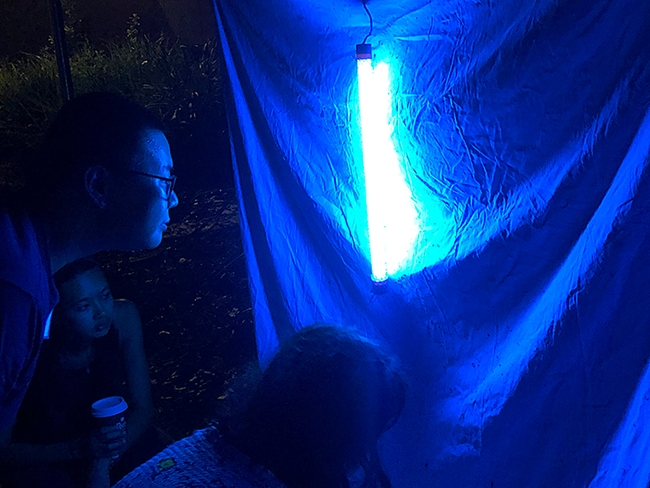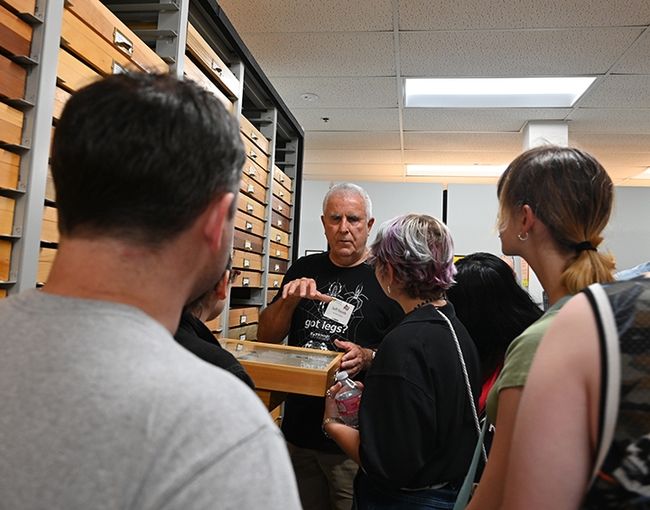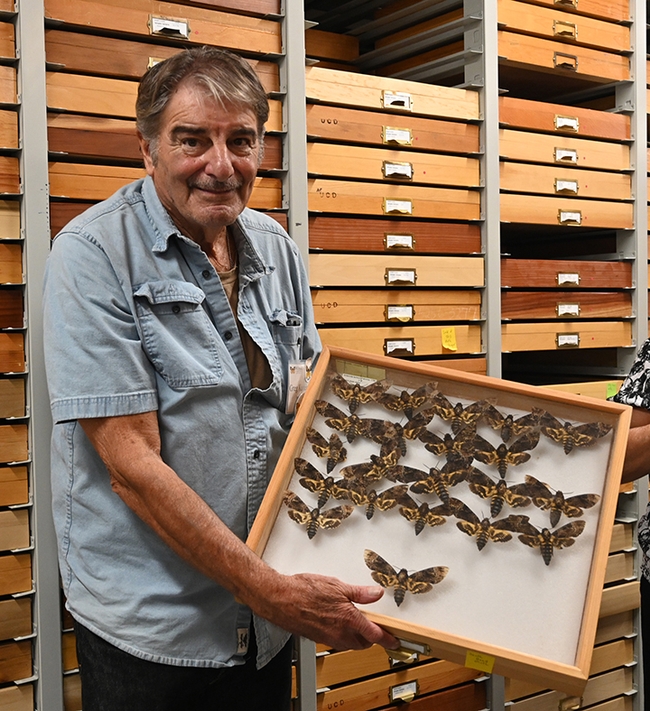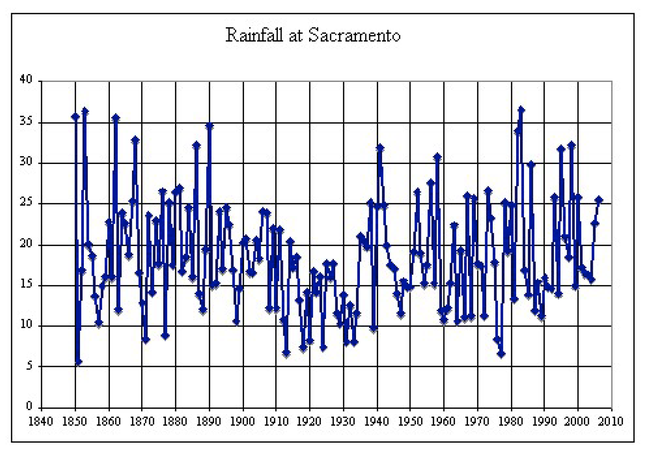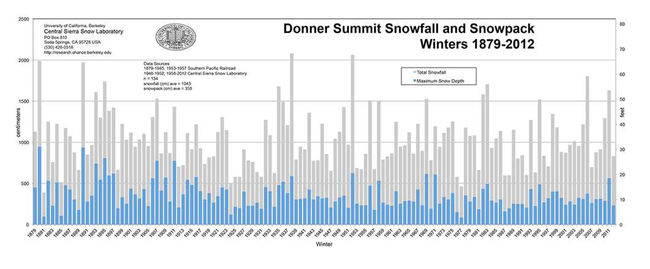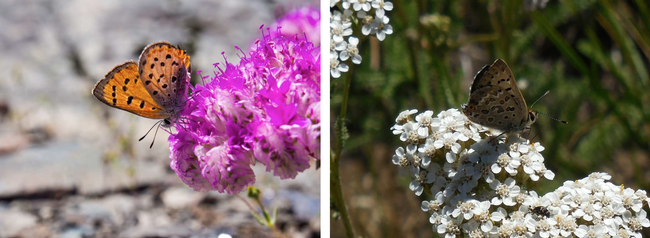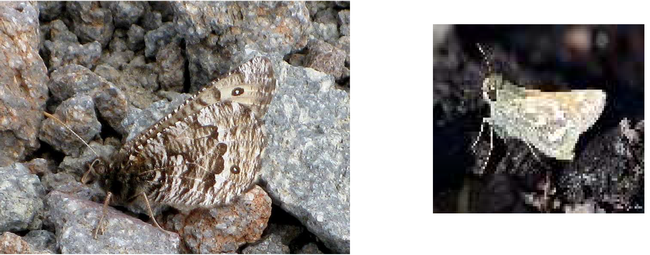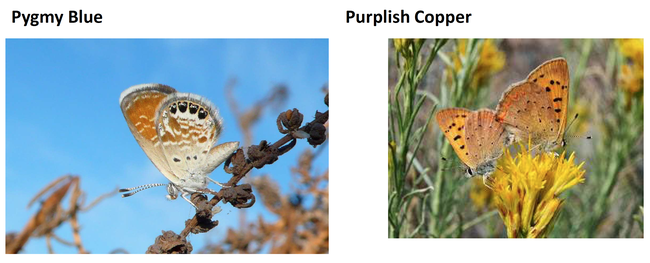- Author: Kathy Keatley Garvey
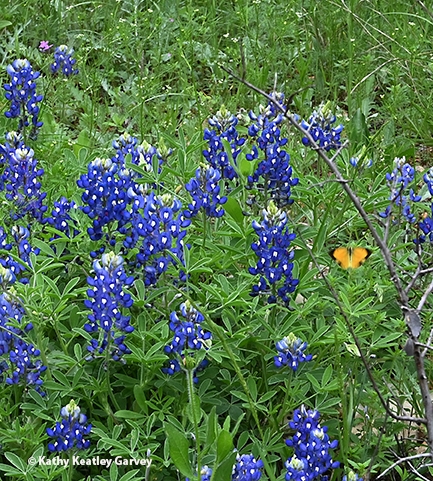
The Wildflower Center, the state's botanical garden and arboretum, showcases bluebonnets, lots of bluebonnets. You'll see scores of other floral species, too, and maybe....well, rattlesnakes. You're told that "Fire ants, poison ivy, cacti and snakes are probable in this natural environment."
You're in Texas, after all.
At the entrance to the courtyard, you may spot Athena, the Wildflower Center's resident great-horned owl (Bubo virginianus) nesting there, and you may see her mate.
There are rules (etiquette and policies). "The Eyes of Texas" are upon you. No pets (service animals only). No open-carry guns. No drones. No smoking. No outside alcohol. No bicycles, scooters, balloons, confetti or glitter.
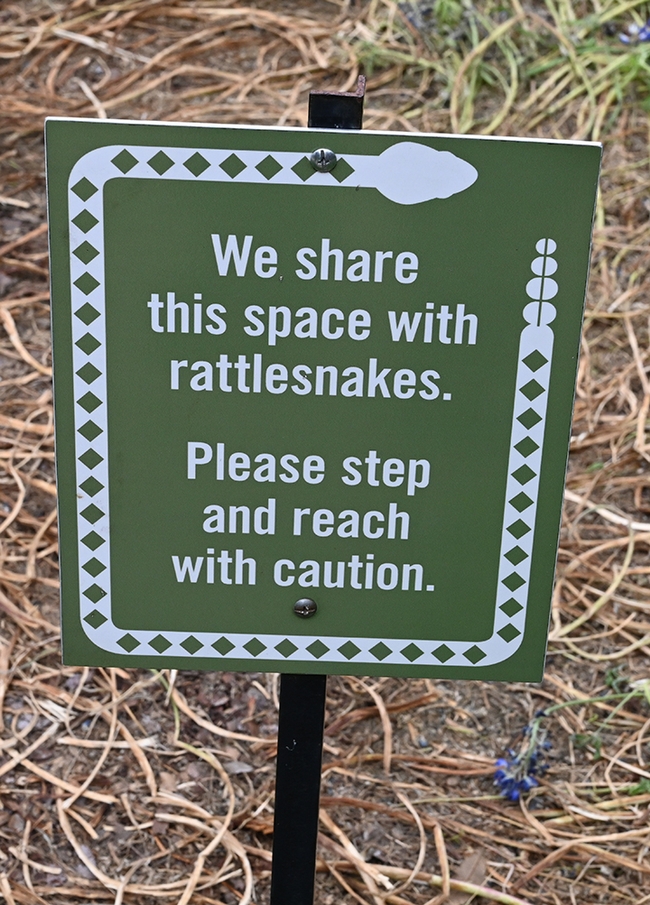
What kind of wildlife will you see? Well, besides the rattlers and the owls, you may spot hummingbirds, bees, butterflies, roadrunners, rabbits, squirrels, turtles, scorpions, and more. "In every case, please be aware of your surroundings and respect these wild creatures' space."
You must follow photo and video policies as well. If you want to capture images of the butterflies, be sure to take a long macro lens (which I didn't do), as the butterflies always seem to be fluttering 20 feet away from you and your camera.
The rules enable ALL visitors to enjoy the wildflower center, and an opportunity to see the nearly 900 species of Texas native plants.
But ah, the bluebonnets...The butterflies...Nature at its finest.
Entomologist Mike Quinn, curatorial associate, University of Texas, relates on the Wildflower Center website that the butterfly species include:
- Little yellows (Pyrisitialisa)
- Sleepy orange (Abaeis nicippe)
- Southern dogface (Zerene cesonia)
- Cloudless sulphur (Phoebis sennae)
Also of entomological interest is a sign depicting insects and their habitat that asks: "Who's been here?" Images feature a chewed leaf, rolled leaf, leaf galls, a spittlebug and a leaf miner. The text includes:
- "This is a chewed leaf. There are different insects that like to eat leaves. Caterpillars and grasshoppers are just a couple that love eating leaves."
- "This is a rolled leaf. The insect has wrapped a leaf around itself for protection and also so it can eat the leaf without being seen by predators. A leaf-rolling weevil likes to eat oak leaves."
But ah, the bluebonnets...The butterflies...Nature at its finest.
As Lady Bird Johnson said at a speech at Yale University on Oct. 9, 1967: "The environment is where we all meet, where we all have a mutual interest; it is the one thing all of us share. It is not only a mirror of ourselves, but a focusing lens on what we can become."
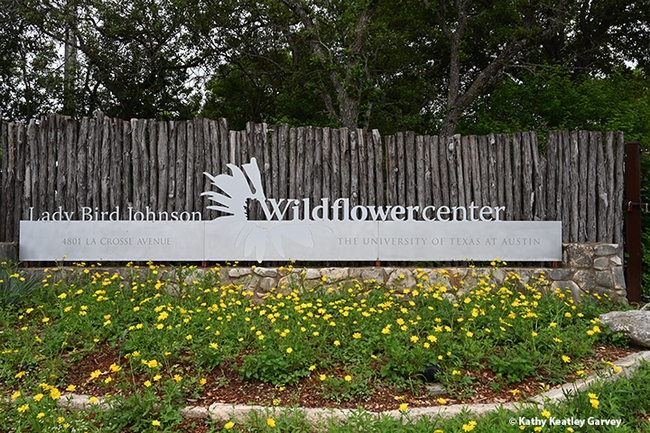
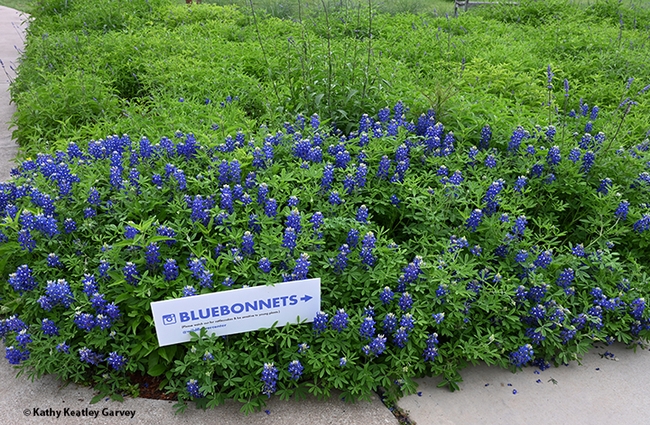
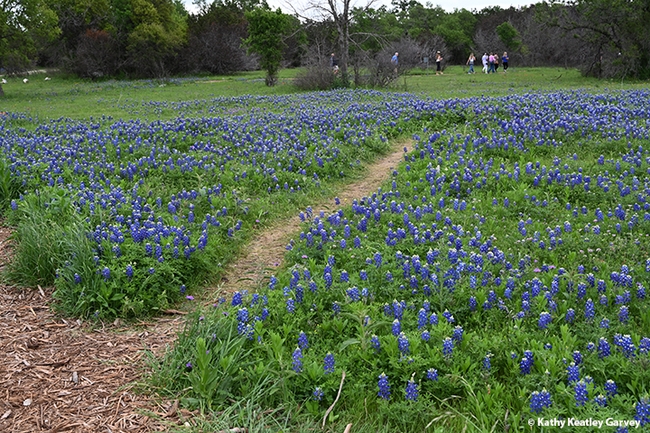
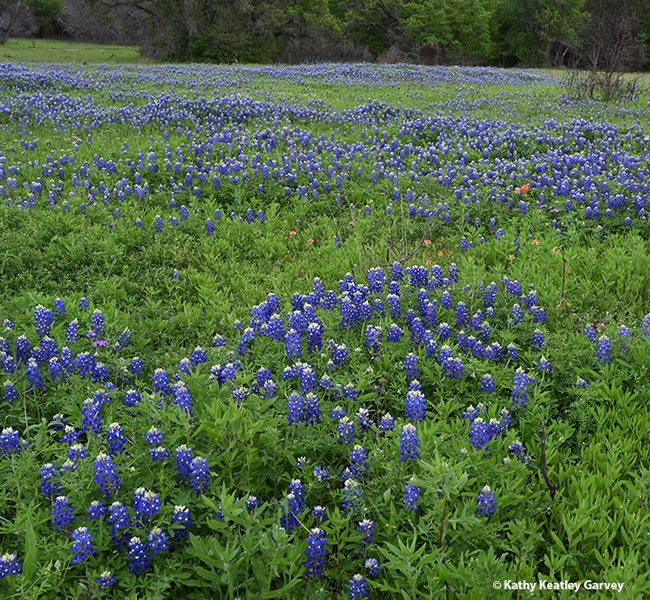
- Author: Kathy Keatley Garvey
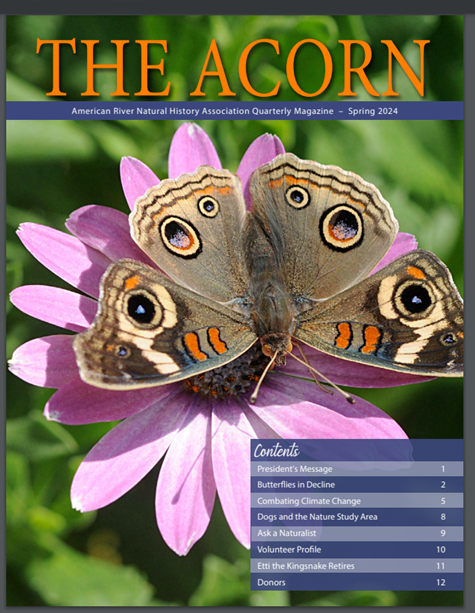
You'll learn which butterfly populations are struggling and which ones are doing well, and glean more information about the research of UC Davis distinguished professor emeritus Art Shapiro, and his collaborator, Professor Matt Forister of the University of Nevada, his former doctoral student.
Shapiro has been monitoring the butterfly populations of central California since 1972. His transect of ten fixed study sites sprawls from the Sacramento River Delta, through the Sacramento Valley and Sierra Nevada mountains, and to the high desert of the western Great Basin. The sites, Shapiro says, "represent the great biological, geological, and climatological diversity of central California."
The article is authored by entomologist Mary Louise Flint, a docent at the center and editor of the quarterly. She holds the title of professor of Cooperative Extension emerita, based in the UC Davis Department of Entomology and Nematology. She served as a longtime associate director of the UC Statewide Integrated Pest Management Program (UC IPM) until her retirement in June 2014. (See her biography on the UC IPM website).
"Over the last decade or two, scientists in many parts of the world have documented examples of declining insect num- bers—both in numbers of species (species richness) and in the number of individuals of each species (population levels)," Flint began. "Habitat loss, pesticide use, and climate change are usually identified as the main contributing factors, although circumstances vary among insect species and location."
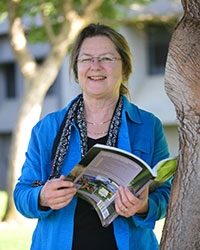
"Three of Shapiro's sample sites," Flint pointed out, "are relatively close to our nature area—Rancho Cordova, near the American River across from Sacramento Bar, North Sacramento on the American River near California State University, and West Sacramento in the Yolo Bypass near the causeway. (The Rancho Cordova site is closest and most similar to Effie Yeaw in habitat.) A close study of the data collected at these sites between 1988 and 2010 showed that summer minimum temperatures and fall maximum temperatures increased significantly and precipitation decreased. During this time, species richness tended to decrease after years of high temperatures and reduced precipitation."

Among those on "the struggling list" are the monarch, Danaus plexippus; West Coast lady, Vanessa annabella; the great copper, Lycaena xanthoides; and the large marble, Euchloe ausonides. The large marble, "formerly common in the Central Valley, Delta, Bay Area and lower foothills...has suffered an unexplained crash and is teetering on the brink of regional extinction," according to Shapiro's website.
Those on the "doing well" list include the Gulf Fritillary, Agraulis vanillae; pipevine swallowtail, Battus philenor; fiery skipper, Hylephila phyleus; the Western tiger swallowtail, Papilio rutulus; and the gray hairstreak, Strymon melinus.
See Flint's article for more information, and access Shapiro's research research website, and Forister's research website.
A buckeye butterfly, Junonia coenia (image by yours truly) graces the cover. Numerous other butterfly images illustrate the piece.
Shapiro recently delivered a presentation, "Using Butterflies to Understand Biotic Responses to Climate Change," at the UC Davis emeriti celebration, organized and coordinated by UC Davis Distinguished Professor Walter Leal of the Department of Molecular and Cellular Biology. (See Shapiro's presentation on YouTube and coverage on Bug Squad blog.)
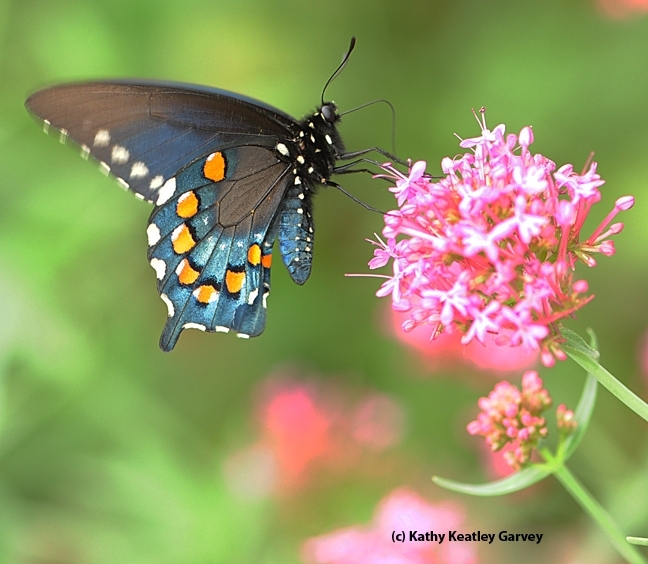
- Author: Kathy Keatley Garvey
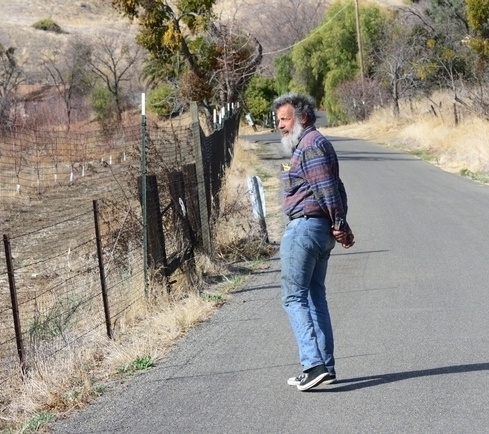
The emeriti celebrations are the brainchild of UC Davis distinguished professor Walter Leal of the Department of Molecular and Cellular Biology (and former professor and chair of the Department of Entomology). He organizes and hosts the events in the International Center.
The recent emeriti celebration honored 73 faculty who retired in the 2022-2023 cohort. Some discussed their research.
Shapiro titled his talk "Using Butterflies to Understand Biotic Responses to Climate Change."
Shapiro, who holds a bachelor's degree in biology from the University of Pennsylvania (1966) and doctorate in entomology from Cornell University (1970), began his UC Davis career in 1972 with the Department of Entomology. He recently retired from the UC Davis Department of Evolution and Ecology faculty, but continues his research with his former doctoral student, Professor Matt Forister of the University of Nevada.
Shapiro maintains a research website at https://butterfly.ucdavis.edu. Some excerpts from his slide show presentation:
How It All Began
In 1972, as a new assistant professor, I inaugurated what was supposed to be a 5-year study of butterfly phenology (seasonality) in an attempt to identify which weather variables had the greatest impact on the life-history “strategies” of species.
Why Five Years?
- That would give me enough variability for statistical analysis, using multivariate methods, and
- Given the time frame for my tenure decision, it would allow me to finish the project in case I had to leave.
- I got tenure. And I kept on gathering data!
Why Keep Going?
If you were here in the early 1970s, you'll recall that the climate was extraordinarily variable. That was great for me; the more year-to-year variation, the more could be teased out statistically about climate-life history correlations.
The variability continued, and the data were so good I didn't dare stop collecting them. What started as a 5-year project became a 45-year project!
At that time there was only one other longterm butterfly monitoring project in the world—in the U.K., started at the same time.
I started out trying to understand the climatic basis for “voltinism”—the number of generations (broods) per year--and the way each species spent what is for it the “adverse season.” But once I had several years of data a new question arose: what determines the “first flight date” (FFD) of a species in a given year?
This Graphic Illustrates Why I Kept Going
Look carefully at it! What pattern strikes your eye?
If you have studied statistics, you may have learned about "time series analysis," which is used to extract information from long series of repeated data or measurements.
An important idea here is the distinction between "signal" and "noise." Noise is short-term variability. Signal is longer-term trend.
There's lots of noise on this annual-rainfall plot, but is there any signal? To answer that, we need to look at more than one time frame. By inspection--the stats bear it out--the first third of this data set was extremely noisy and the last third nearly as much so.
The middle third was much less so. If we calculate means and variances--variance is a measure of dispersion around the mean--the middle third of years was both drier and more predictable than the others. I arrived just in time to exploit the return of the Gold Rush era climatic unpredictability, and I was in Seventh Heaven.
And here is the seasonal snowfall data from Donner Summit, where the pattern is less clear
Those factors are going to vary with altitude and climate
A species occurring here in the High North Coast Range of Colusa County has to deal with snowmelt timing, a factor that will not impinge directly on the same species in the foothills below. When we have multiple years of data for the same locations, we can work out detailed analyses of the factors controlling seasonability.
At low elevations, we find ample evidence of advancing first-flight dates (FFDs)
We have a set of 20 indicator species that have been tracked at all our low-elevation sites throughout the study (we had 23, but 3 have gone regionally extinct, like the Large Marble (Euchloe ausonides).
These two species have been the most responsive to climatic warning in our study: the Red Admiral (Vanessa stalanta) and the Field Skipper (Atalopedes campestris)
Both have fascinating back stories. The Red Admiral, which hibernates as an adult, also occurs in the U.K., where it has ALSO been the most phenologically responsive species to climatic warning. And the Field Skipper, which in the 1920s was confined to Southern California, expanded northward, reaching near the Oregon border by 1980 and subsequently expanding its breeding and overwintering range to Washington State and western Nevada, where it had previously been a rare stray. Its spread is statistically closely matched with climatic trends.
Cabbage White Butterfly
The Cabbage White Butterfly (Pieris rapae) has a special place in our study--because we enlist the general public in trying to document its FFD.
We offer a pitcher of beer for the first Pieris rapae collected in Yolo, Solano of Sacramento counties each year. The idea is to get as many people as possible out looking for it. If I begin losing frequently, this says I'm not looking hard enough. Public participation keeps me honest. I've lost 5 times in 45 years. Actually 7, but two finds were ruled inadmissible because the butterflies were caught indoors--both in kitchens. Sometimes a mature caterpillar will be brought in on a head of cabbage, escape undetected, and pupate somewhere. Then, given the higher indoor temperature, it hatches into an adult before any are flying outside. The rules originally didn't specify that the beast had to be caught outdoors. They do now. As sole judge, I simply declared those two indoor bugs ineligible!
So, what have we found?
Near sea level, of the 20 surviving indicator species, 9 are emerging significantly earlier in the 2010s than in the 1970s and 2 are significantly later--but those 2 are in the process of going regionally extinct and their apparent lateness appears to result from the low probability of encountering such rare species. The remainder are not statistically significant, but most are earlier. The average significantly earlier species is emerging 2/3 of a day earlier/year, on average, or a week earlier/decade!
One of the disappearing ones is the Field Crescent (Phyciodes campestris).
One consequence of climate change may be to disrupt butterfly-plant synchrony
Especially for specialist species, if the phenology of the insect responds to climate change differently from that of plants that are essential to its life cycle--be they larval host plants or adult nectar sources--that species is going to be in big trouble!
Many multiple-brooded lowland species change host plant with each generation, making this potentially a complex "many-body problem."
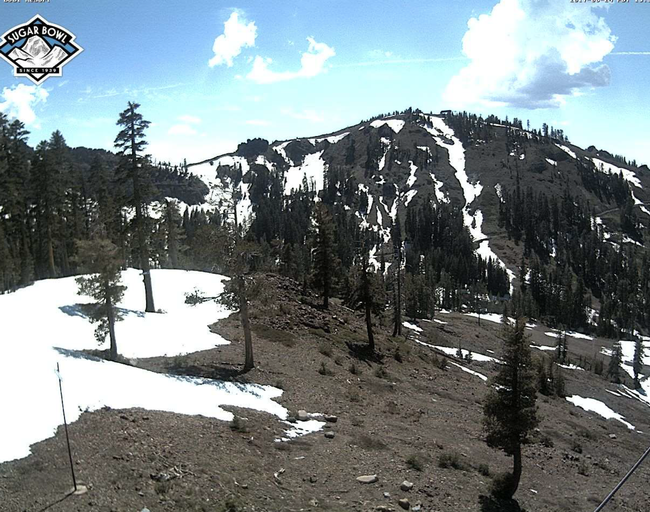
Butterfly seasonality is critically dependent on the amount of snow pack and the timing of snow melt. As a previous graphic showed, there as NOT been a clear trend in total seasonal snowfall at Donner Summit since records have been kept. This is a picture at 7000 feet on June 24 last year. During the preceding drought, there was no snow at all on the ground here by June 24 and many things were happening--flowers blooming, butterflies flying. Analysis of data from our mountain sites thus requires use of variables beyond those taken into account at lower elevations, and is very effort-intensive.
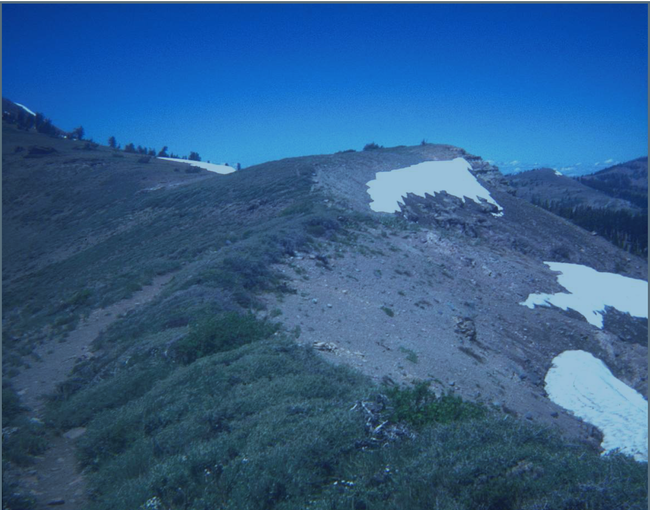
This is the ridgetop between Castle and Basin Peaks at 9000 feet, west slope at left. Note how the snow persists much later on the east slope. This is partly due to the SW wind redistributing snow from the west side to the east, generating massive "cornices" which are slow to melt and would form the nuclei of growing glaciers if favorable conditions persisted several years. Butterfly species that occur on both slopes may emerge weeks later on the east side than on the west slope at the same elevation, producing a prolonged flight season.
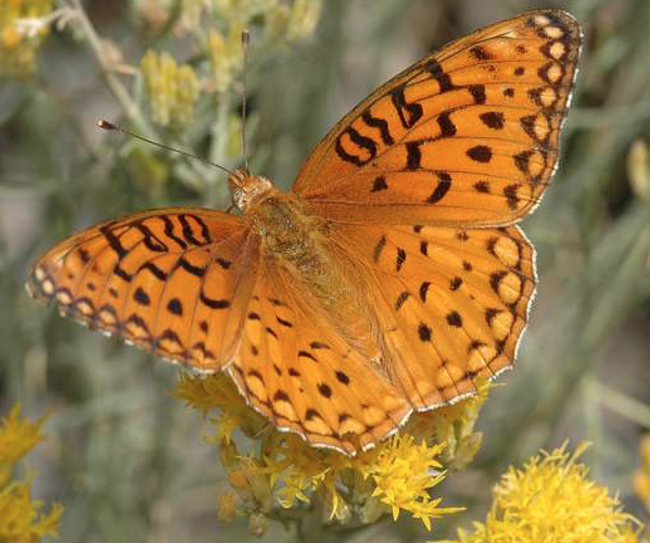
These two Coopers occur at 7000 feet, but have no host plant at 9000 feet. We see adults at 9000 feet with increasing frequency, but they cannot breed.
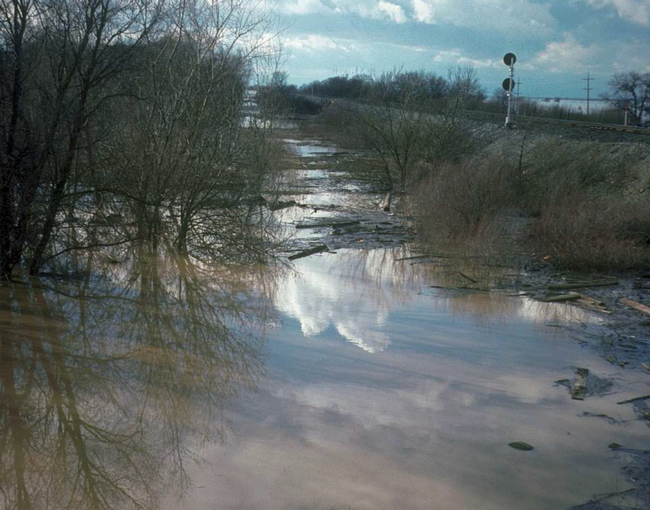
In unflooded places, wet ground and a saturated "boundary layer" of air above the ground are favorable for bacterial and fungal pathogens to proliferate, and overwinter mortality is heavy.
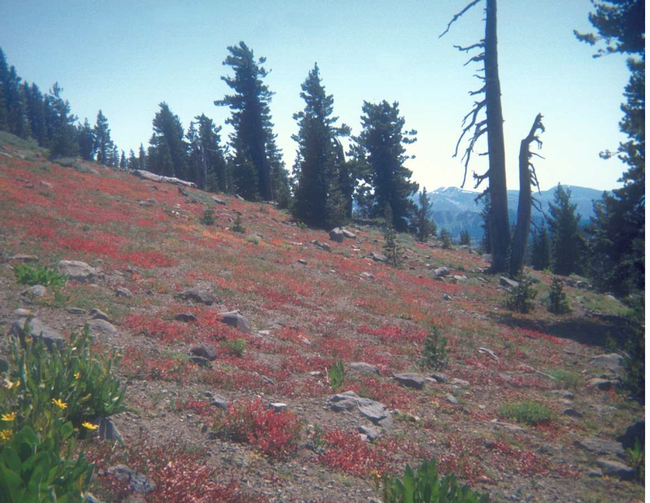
But lack of snow portends a poor butterfly season
But here we see as whatever moisture produced by melting snow is long gone. Butterfly seasons after a poor snow pack tend to end early as the vegetation dries up!
In the high country, heavy snow INCREASES butterfly numbers (and diversity to some extent), and lack of snow INCREASES them.
Because the recent drought went on for over 4 years, the cumulative damage to montane butterfly faunas was far too great to be alleviated by good overwinter survival under one year's heavy snow pack. There were too few animals under the snow at the outset.
Our butterfly faunas have experienced a great deal of climatic variation on multiple time scales. We know from fossil pollen and other indicators that California climates have been exceedingly variable since the end of the Pleistocene ice ages, some 15,000 years ago. Remember our discussion of noise vs. signal? In the short term, a 5-year drought is a critical event. IN the longer term, we know there have been 400-year droughts. We know that the vegetation that exists today--apart from human impacts!--can be seen as a freeze-frame taken from a very long movie. The butterflies we have today are the species that have been able to persist, either by adapting to climate change or by moving around to track favorable conditions--or both. Our studies document their coping mechanisms on a short (45-year) time scale--but no one has ever done that before. They give us data that will help us predict biotic responses to FUTURE climate change--which is essential for their well-being AND OURS.
Morning Session
https://youtu.be/J9bmDZv-WtM
00:00 Getting ready to start 00:15 Opening remarks, Walter Leal 03:26 Land Acknowledgment 06:35 Chancellor Gary May 8:50 Cal Qualset 11:40 Paul Gepts presentation 42:37 Robert Szabo's impromptu remarks 45:40 Bruce Hammock 47:45 Isaac Pessah 1:15:40 Congratulations on your retirement, Jay Lund! 1:18:12 William (Bill) Lacy 1:22:05 Ines Hernandez-Avila 1:52:59 Ken Burtis 1:57:10 Art Shapiro 2:20:50 Q&A 2:28:50 Art Shapiro's additional remarks 2:29:44 Emeriti Napkin 2:29:57 UCDEA Video Recording Interview
Afternoon Session
https://youtu.be/AMs2Q1bimxA
00:00 Highlights of the luncheon 01:20 Suad Joseph, UCDEA 13:16 Mont Hubbard 16:40 Simon Cherry 51:44 Jeffery Gibeling 56:52 Subhash Risbud 1:23:25 Snapshot with undergraduate students 1:23:48 Clark Lagarias 1:26:19 Anne Britt 2:00:30 Sascha Nicklisch 2:03:53 Ron Tjeerdema 2:36:30 Edward Callahan 2:40:45 Andres Sciolla 3:09:41 Mary Croughan 3:18:10 Walter Leal 3:18:55 After the event
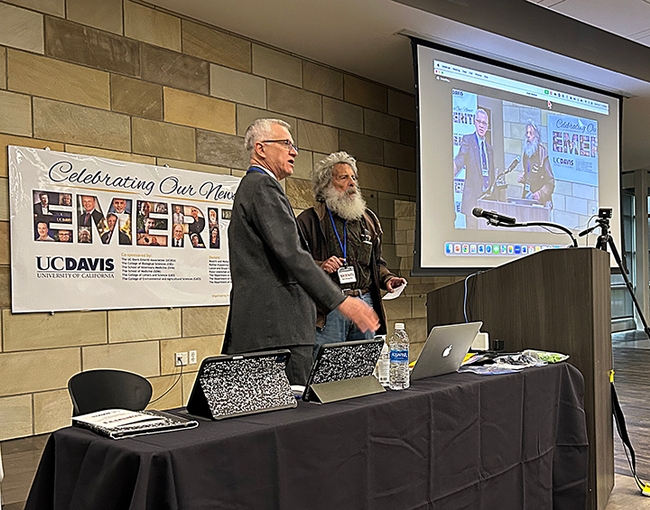
- Author: Kathy Keatley Garvey
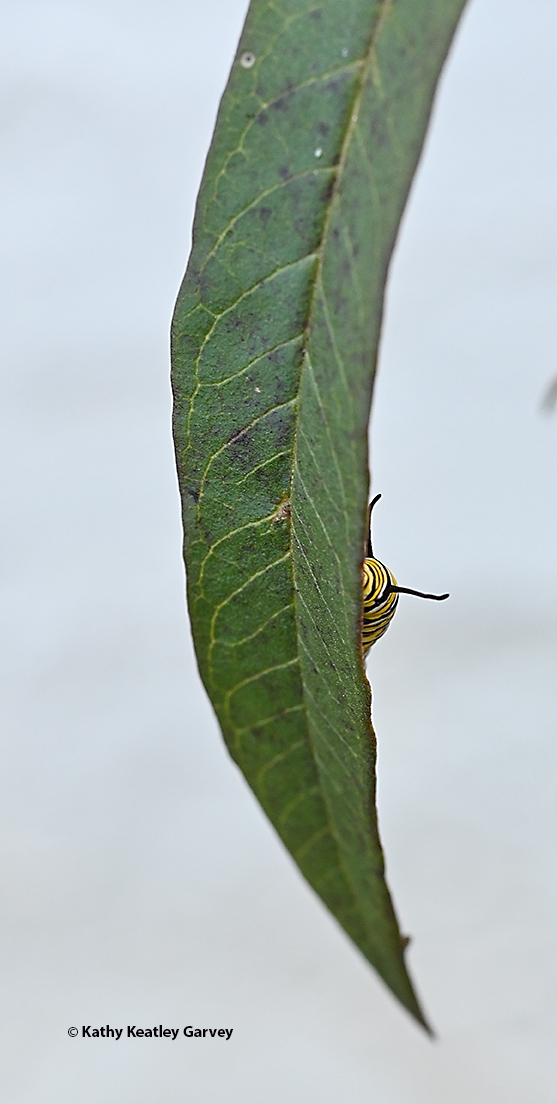
It lived--and quite hidden at that--through the freezing cold, the rain, and the wind. It surfaced today on a milkweed in our Vacaville pollinator garden.
Surprise, surprise! We neither saw it as an egg nor as a tiny caterpillar.
"Most larval mortality in monarchs occurs in the first 2 or 3 instars.. so they keep as hidden and low-key as possible," entomologist David James, an associate professor at Washington State University, told us. "Once they make it to the fourth instar, they are emboldened and are more likely to be seen exposed."
James, who studies migratory monarchs, earlier commented on the fall breeding: "The egg laying females you are seeing now are likely migrants that have eschewed reproductive dormancy for reproduction. This has probably always happened to some extent but is likely more significant now because of warmer falls. The lack of activity in summer in Vacaville was probably a function of most of the population having dispersed further east and north, maybe more than usual? They surely did pass through Vacaville in spring on their way north but clearly didnt stop to use your milkweeds. It does seem that some years they are more prone to frequent stopping/oviposition on their way north and east, yet in others they just keep flying. There's evidence that the latter was the case this year... with as many migrants making it to BC as to Washington...Normally they stop in Washington and only a handful make it to BC."
James is the author of a newly published book, The Lives of Butterflies: A Natural History of Our Planet's Butterfly Life (Princeton University) with colleague David Lohman of the City College of New York. The book, released in the UK on Oct. 3, 2023, will be available in the United States starting Jan. 9, 2024.
Irish scientist Éanna Ní Lamhna recently interviewed the WSU entomologist in a podcast on RTÉ, or Raidió Teilifís Éireann. The book, Lamhna said, "showcases extraordinary diversity of world's butterflies, while exploring their life histories, behavior, conservation and other aspects of these most fascinating and beguiling insects." (See Bug Squad blog). Listen to the butterfly podcast here:
https://www.rte.ie/radio/radio1/clips/22294525/
Meanwhile, we checked another milkweed plant in the garden today and spotted another caterpillar, this one a little smaller and less active than the first.
As UC Davis distinguished professor Lynn Kimsey, director of the Bohart Museum of Entomology, commented: "So much for diapause!"
Now our milkweed garden includes scores of hungry aphids, several species of milkweed, two 'cats, and maybe three (one 'cat went missing and is probably j'ing somewhere) and four chrysalids.
Will we have a Merry Chrysalis?
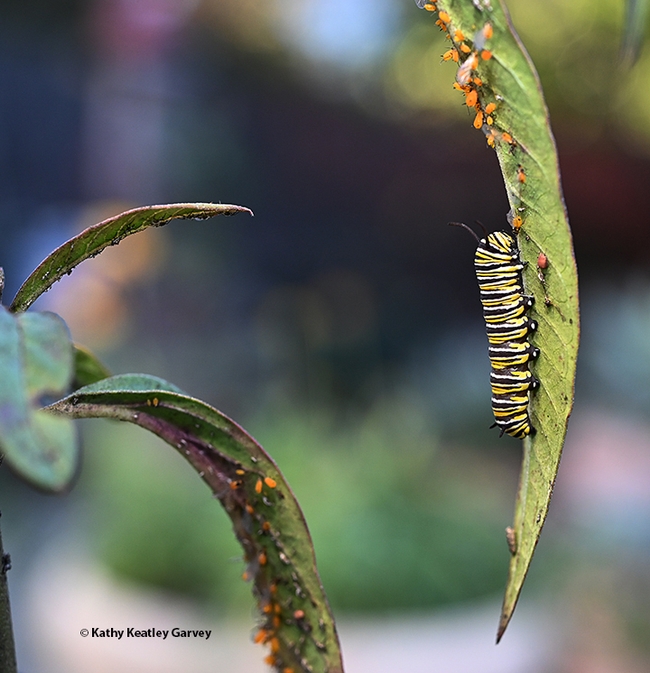
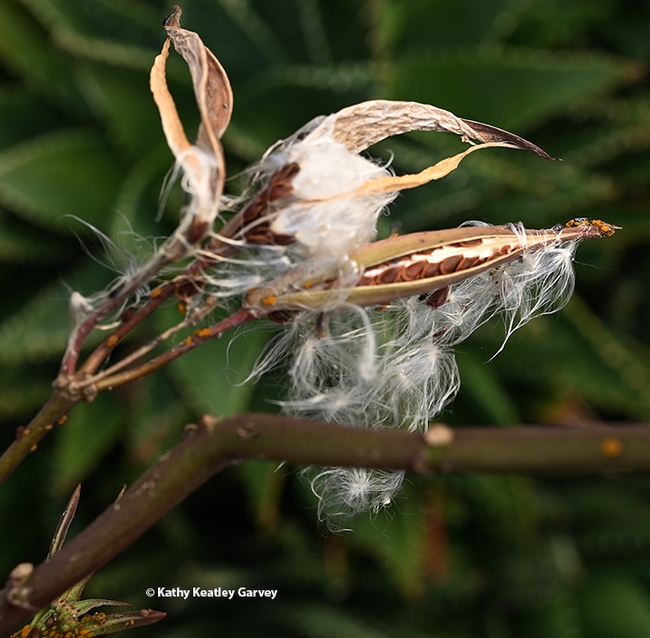
- Author: Kathy Keatley Garvey

The open house showcased moths, in celebration of National Moth Week, and spotlighted flies, in keeping with the 10th International Dipterology Congress, held July 16-21 in Reno. Bohart officials dedicated the open house to the late Jerry Powell, international moth authority and a former director of the Essig Museum of Entomology, UC Berkeley, who died July 8 at age 90.
A blacklighting display, near the entrance to the Bohart Museum, drew night-flying insects to a white sheet, illuminated by an ultraviolet light.
"There were not many moths," said "Moth Man" John de Benedictus, a research entomologist associate with the Bohart Museum and a former graduate student of Powell's. "Only about 5 or six in all. All but two were the so-called Dusky Raisin Moth, Ephestiodes gilvescentella,which comes as no surprise as it is the most common moth in my yard and probably throughout Davis. Its caterpillar feeds on a wide variety of plants, including dried fruit and nuts, but it is not a major pest. There were two granite moths, probably Digrammia californiaria, and/or Digrammia muscariata. The younger kids entertained themselves by pointing out or trying to catch the other insects that flew in, mainly gnats and other small flies; a few beetles, including lady bugs; some aquatic bugs; and a couple of lacewings and earwigs. An older boy collected some ants that marched to the sheet."
Entomologist Jeff Smith, curator of the Bohart Museum's Lepidoptera collection, and Bohart associate and naturalist Greg Kareoelas, showed visitors many of the moth specimens, including death's-head hawkmoths, featured in the 1991 movie, Silence of the Lambs. In the movie, serial killer, Buffalo Bill (played by Ted Levine), stuffs death's-head hawkmoths inside his victims' throats. FBI trainee Clarice Starling (played by Jodie Foster) seeks the advice of the cannibalistic psychiatrist, Hannibal Lecter (played by Anthony Hopkins), to solve the mystery. The moths appearing in the movie are Acherontia stropos. The moth markings resemble a human skull.
The Bohart Museum, directed by UC Davis distinguished professor Lynn Kimsey, houses a global collection of eight million insect specimens, including some 500,000 moths or butterflies (60 percent moths and 40 percent butterflies). The museum is located in Room 1124 of the Academic Surge Building, 455 Crocker Lane, UC Davis campus. During the summer, the Bohart Museum is open to the public on Tuesdays from 2 to 5 p.m. For more information, contact the Bohart Museum at bmuseum@ucdavis.edu or (530) 752-0493.
(More images from the Bohart Museum open house, "A Night at the Museum," will appear this week on Bug Squad)
